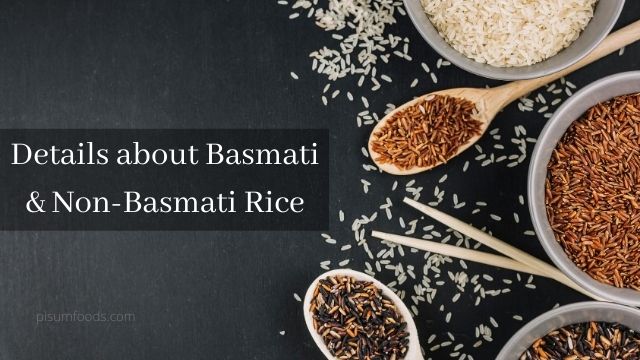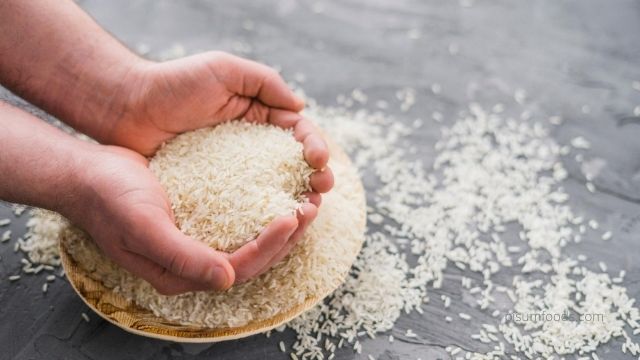 Translate
Translate Translate
TranslateWhen you consider rice, what all dishes do you recollect? Some of you may recollect Biryani, some may recall Rajma Chawal (Kidney beans and rice), and some of you may recall Sushi and many more dishes prepared using rice. In any case, do you realize where India remains in the matter of producing rice? India is positioned in the top second situation in producing and supplying rice to the entire world on the grounds that there is an immense creation of Basmati and Non-Basmati rice over the Indian fringes.

Rice is one the most expended nourishments on Earth, a staple in numerous nations around the globe including India where half of its populace relies upon the grain for food. While numerous individuals know about India’s basmati rice, there are really around 6,000 unique assortments of rice developed in the nation. Asia Society Korea’s Matthew Fennell talked with H.E. Vikram Doraiswami, the Indian Ambassador to Korea, about the significance of rice in Indian culture and food.
Archaeological proof of rice development in India proposes that this grain was the premise of India’s antiquated civic establishments, with signs that rice was being utilized in the valley of the Ganges stream as far back as 6500 BC. The varieties utilized, and the nonappearance of any known system of the move of information recommends that rice development started in the incomparable Asian human advancements in present India, China, Thailand, and somewhere else self-governing. In the most recent centuries, somewhere in the range of 110,000 varieties of rice created in India alone! Extensively, in any case, India has enormous scope creation of both white rice varieties and earthy coloured rice varieties.
Today, rice is the most developed grain on earth. India isn’t just the second-biggest maker of rice on the planet, representing approximately 20% of worldwide creation, it is additionally among the biggest purchasers of this grain, with over half of India’s 1.2 billion individuals relying upon rice for food. It is the absolute most significant staple thing in practically the entirety of India’s very assorted cooking societies, with various words for rice in every one of India’s 29 authority languages! Rice is over and over referenced in old Indian writings, including the Yajur Veda (aggregated in the period around 1800 BC), and is firmly connected with fruitfulness and wellbeing over India’s numerous social conventions.
In this way, truly, rice has consistently been related to human advancement in India.
Today we, despite everything, have around 6000 distinct varieties of rice in India, however, scientists gauge that we have lost countless local varieties of rice over the most recent forty years or thereabouts. And, after it’s all said and done, the decent variety of Indian rice varieties is among the most on the planet—from sweet-smelling and fragrant long-grain basmati varieties that develop in the northern piece of the nation to roundish medium-grain, glutinous rice favoured in the southern waterfront territories. There are different sorts, including “red rice” (a coarse-husked variety that has a ruddy earthy coloured outside shading), which is exceptionally famous in Kerala in the South of India, just as in a portion of our neighbouring nations. Parboiled rice, in which the rice is prepared diversely in the wake of gathering, is likewise well known in India.

As its name suggests in north Indian dialects, it signifies ‘scent filled’. Along these lines, this variety of rice is especially useful for appetizing dishes joining other fragrant flavours like saffron, cardamom, cinnamon, narrows leaf, mace, pepper, and so on. A fragrant meat-based rice dish like “Biryani” coordinates these flavours with the scent of the rice, in this way multiplying the tactile intrigue of the food to the sense of taste.
In the sense of taste, basmati has an extraordinarily nutty, warm flavour. All around steamed basmati rice, presented with fragrant sauces or meat, helps supplement and upgrade the kind of the food by giving a warm base flavour on the sense of taste.
Lastly, outwardly, basmati grains are extra-long and non-clingy. At the point when cooked, basmati grains separate perfectly from one another. This gives a basmati-based dish a particularly unique appearance when contrasted with other rice-based dishes. Curiously, there is a platitude in the old language of Sanskrit that grains of rice ought to resemble siblings: close, however not stayed together!
Indian rice is additionally steam-cooked frequently when it is utilized as plain rice to go with sauce-based dishes. Be that as it may, when it is filled in as a pilaf, it is generally dry boiled with flavours, different fixings, and margarine before being moderately cooked with water. Rice is likewise transformed into a scope of pastries, in which case it is cooked totally in thickened milk. Or on the other hand, it tends to be transformed into hotcakes and appetizing rice cakes, in which case it is transformed into the glue with lentils, matured, and afterwards, flame-broiled. In north-eastern India, rice is even cooked over coals in bamboo tubes.
Actually, I am inclined toward Biryani—a sort of rice pilaf cooked with fragrant spices, flavours, and meat. There are many varieties of biryani with noteworthy provincial varieties, from the hot and fiery assortment in Hyderabad to a form with prawns and coconut flavour in Kerala, to the unobtrusive and moderate steam-cooked adaptation of Lucknow in the North. It is a finished feast presented with a dainty yoghurt and vegetable “raita”.
Preferably, a rice fan ought to catch up an Indian biryani with a “firni”, or a rice pudding that has the consistency of a chilled and thick puree.
Rice is one of the most popular and widely consumed staple foods across the world. It is consumed extensively in Asia and Africa and is the agricultural commodity with third-highest production in the world. Therefore the rice export from India has been increasing over the years. It is generally grown as an annual plant but in areas like the tropics, it can also survive as a perennial crop. India is the leading exporter of the Basmati Rice globally. During the year 2015-2016, the export of rice from India was about 40.45 Lakh MT of Basmati and 63.66 Lakh MT Non-Basmati. Thus, exporting rice from India has now become a rapidly growing business opportunity for local farmers, vendors and exporters.
Pisum is the leading rice exporter from India. Pisum Foods believes that Indian culture, food, flowers, and such other products should be spread to the entire world. The executives at Pisum are trained to help and support our clients at each step of the export process. With their expertise and extensive experience in the export field, they make sure that the export of rice from India is a hassle-free process for the clients. If you are looking for exporters from India, Contact Pisum now!